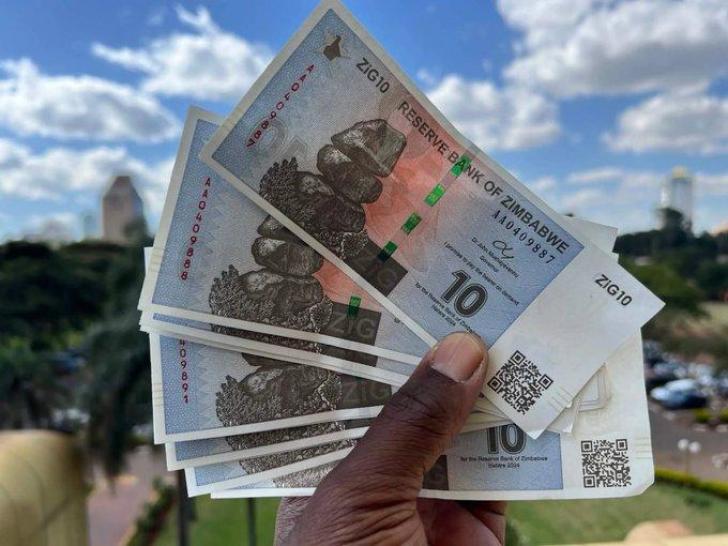News / National
ZiG scarcity has eased exchange rate depreciation
16 Jan 2025 at 07:17hrs |
0 Views

The limited availability of Zimbabwe Gold (ZWG) currency has helped ease exchange rate depreciation on the parallel market, although US dollar demand pressures have continued to push premiums higher towards the end of 2024.
Introduced last year, ZWG is Zimbabwe's first-ever Structured Currency backed by multiple resources, including minerals and foreign currency. While the currency initially maintained stability, the local premium faced significant challenges, prompting the Reserve Bank of Zimbabwe (RBZ) to implement measures to safeguard the currency from collapsing.
The Confederation of Zimbabwe Industries (CZI) inflation tracker reported that tight liquidity has managed to alleviate pressures on the parallel market exchange rates.
"Due to the limited supply of ZWG in the market, the depreciation in the parallel market was not sustained, as ZWG started appreciating on the parallel market rate from September 30, 2024. This resulted in a decline in the exchange rate premium to a low level of 27% on the buying rate by mid-October," the industry group said.
However, since mid-October, upward pressure on the buying rate at the parallel market has resurfaced, pushing the premium to about 46% on October 31, 2024. The CZI noted that sources of liquidity driving the parallel exchange rate need to be addressed, as trends indicate that the parallel market rate can appreciate under tight liquidity conditions.
The industry lobby group pointed out that despite a 43% devaluation of the official exchange rate initiated by the RBZ, there was no convergence with the parallel market buying rate, which depreciated by 24% on the same day.
"The recent Zimbabwe Inflation Group (ZiG) inflation surge in September and October 2024 confirms that inflation in Zimbabwe is exchange rate driven. The outlook for inflation generally hinges on the ability to stabilize the exchange rate," the CZI added.
The ongoing struggle to stabilize ZWG availability reflects the complexities Zimbabwe faces in managing its currency amidst fluctuating market dynamics.
Introduced last year, ZWG is Zimbabwe's first-ever Structured Currency backed by multiple resources, including minerals and foreign currency. While the currency initially maintained stability, the local premium faced significant challenges, prompting the Reserve Bank of Zimbabwe (RBZ) to implement measures to safeguard the currency from collapsing.
The Confederation of Zimbabwe Industries (CZI) inflation tracker reported that tight liquidity has managed to alleviate pressures on the parallel market exchange rates.
"Due to the limited supply of ZWG in the market, the depreciation in the parallel market was not sustained, as ZWG started appreciating on the parallel market rate from September 30, 2024. This resulted in a decline in the exchange rate premium to a low level of 27% on the buying rate by mid-October," the industry group said.
However, since mid-October, upward pressure on the buying rate at the parallel market has resurfaced, pushing the premium to about 46% on October 31, 2024. The CZI noted that sources of liquidity driving the parallel exchange rate need to be addressed, as trends indicate that the parallel market rate can appreciate under tight liquidity conditions.
The industry lobby group pointed out that despite a 43% devaluation of the official exchange rate initiated by the RBZ, there was no convergence with the parallel market buying rate, which depreciated by 24% on the same day.
"The recent Zimbabwe Inflation Group (ZiG) inflation surge in September and October 2024 confirms that inflation in Zimbabwe is exchange rate driven. The outlook for inflation generally hinges on the ability to stabilize the exchange rate," the CZI added.
The ongoing struggle to stabilize ZWG availability reflects the complexities Zimbabwe faces in managing its currency amidst fluctuating market dynamics.
Source - newzimbabwe
Join the discussion
Loading comments…
























